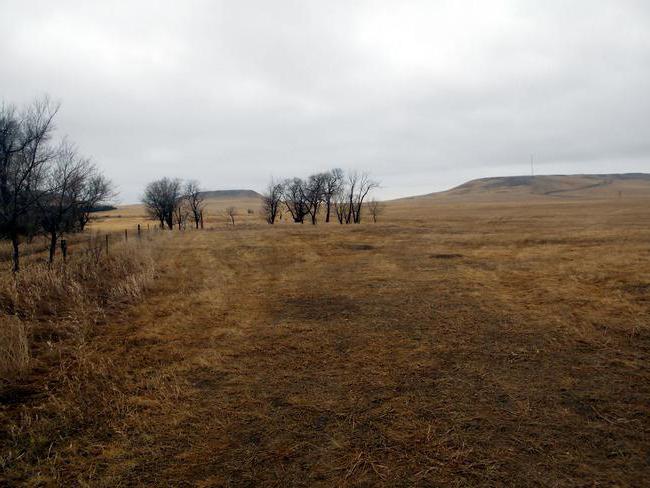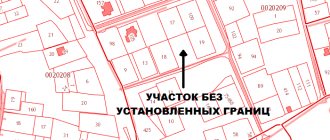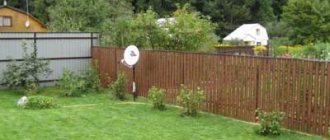Home / Land, dacha, construction / Documents and legislation / Land plot
Back
Published: 02/27/2018
Reading time: 13 min
0
3640
In the process of choosing a land plot, it is worth paying attention to such a parameter as the territorial zone of the land plot. It is on this basis that the type of permitted use of the site and the possibility of developing it with specific objects are determined.
- Territorial zones of land plots: concept and legislation
- Types of zones
- How to find out the territorial zone of a land plot
- If you need to change the zone of the land plot
Land user rights in a zone dispute
In Article 1 of the previous edition of the Civil Code of the Russian Federation, which was in force until July 1, 2006, zoning was understood as the division of territory into zones in urban planning for the development of territories and settlements with the definition of the types of urban use of established zones and restrictions on their use. In accordance with the current Civil Code of the Russian Federation (clause 6 of article 1), urban planning zoning is the zoning of the territories of municipalities in order to determine territorial zones and establish urban planning regulations.
The concept of two territorial zones
Article 23.
master plans for settlements and master plans for urban districts, master plans for settlements and master plans for urban districts. According to the town planning code: 3.
Master plans include maps (schemes). [read more].
Article 41 Town planning regulations
Relation to the main function Types of permitted use of the territory Individual housing construction 1. Sizes of land plots: minimum area of plots - 400 sq. m.
m; maximum area of plots – 4000 sq. m. 2. Territory utilization coefficient - no more than 0.67.
3. Number of floors – no more than 3 floors. a) from a residential building to the red line for new construction: - at least 5 m from the streets; - at least 3 m from the side of the driveways; - in the area of existing buildings - in accordance with the current situation. b) from outbuildings to the red line of streets and driveways - at least 5 m.
Land plots within recreational zones, including land plots occupied by urban forests, squares, parks, city gardens, ponds, lakes, reservoirs, are used for recreation and tourism.
Public land plots occupied by squares, streets, driveways, highways, embankments, squares, boulevards, water bodies, beaches and other objects may be included in various territorial zones and are not subject to privatization.
Town Planning Code of the Russian Federation
PPT.RU - Power. Right. Taxes. Business
- about the project
- Advertising on the website
- Feedback
- Subscribe to newsletters
- Made in St. Petersburg
Full or partial copying of materials is prohibited; in case of agreed copying, a link to the resource is required
— special sports and entertainment facilities - training grounds, equestrian centers, bicycle tracks, motor racing tracks. — seasonal facilities (non-permanent buildings) of public catering (cafes, snack bars, restaurants).
— recreation areas; — parking lots (parking lots) in front of service, recreational and sports facilities; — landscaping elements, fountains, small architectural forms; — engineering infrastructure facilities (electricity, heat, water and gas supply, sewerage, telecommunication networks); — fire protection facilities; - areas for garbage disposal.
Source: https://vash-yurist102.ru/ponjatie-dvuh-territorialnyh-zon-78892/
What is “zoning” of a site and why is it needed?
The capabilities of the owner or tenant of a specific land plot for land use and development are determined in accordance with the territorial zone to which the land plot belongs. And it can be found out from territorial planning documents, for example, in Nizhny Novgorod, a master plan for the city of Nizhny Novgorod has been developed and is in effect, which contains information on the planning of the territory. What does all this mean in practice? This means that when thinking about purchasing a land plot as a lease or ownership, you need to understand well that the possibilities of using and developing this plot depend on the following basic parameters: the territorial zone to which the land plot belongs; restrictions on the conditions for the protection of cultural heritage objects - in cases where a land plot or other real estate object is located in the zone of protection of cultural heritage objects; restrictions on environmental and sanitary-epidemiological conditions - in cases where a land plot or other property is located in areas where relevant restrictions apply; possible other restrictions (including the existence of possible easements, for example, or water protection zones). On the map of urban planning zoning of the territory of Nizhny Novgorod, the following types of territorial zones are highlighted: Central public, business and commercial zones Special service and business zones for objects with large land Residential zones Special purpose zones Urban planning regulations.
Functional zones: definition, types of zones, definition of boundaries and zoning rules
What is a functional zone? What could it be? According to what are its boundaries established? What are the basic zoning rules? In what areas is this concept applied? In accordance with what regulations are urban areas distributed? What comes first when planning settlements?
What is this? Definition
According to the general definition, functional zones are places for which the boundaries are clearly marked by documentary acts of territorial planning and cadastral registration and a specific intended use is prescribed.
This concept is often confused with the term “territorial zone”. Meanwhile, these concepts have different meanings, although, of course, there are some similarities between them.
How is it different from territorial zones?
The concept of “territorial zones” has a slightly different meaning. Functional zoning, of course, is also followed when dividing areas according to territorial principles. However, this term has a more specific, narrow meaning.
https://www.youtube.com/watch?v=zNbVqpWDYvI
These are areas intended for a specific target location of any objects, for example, parks or residential areas, landfills, industrial buildings. Within each territorial zone there may be several functional ones, however, an inverse relationship also exists.
That is, the definition of this concept is as follows: a zone for which development restrictions, as well as territorial boundaries, are defined and prescribed in the relevant land use regulations.
Main types
Territorial, as well as functional, zones are divided into several main types. Each of them is characterized by its own purpose and specific features or limitations in operation.
The main functional zones of the territory are:
- residential;
- public and business;
- production;
- agricultural;
- recreational;
- special;
- protected.
Each of these types is divided into more narrow-profile subspecies that correspond to their immediate purpose or use.
What are recreational areas?
Recreational functional zones of the city are the following places:
- forest plantations;
- parks;
- walking pedestrian streets;
- gardens;
- facilities intended for sports activities;
- ponds and so on.
That is, these are those places in the city where people do not live or work, but where they spend their leisure time, walk, relax, and play sports. For example, a city embankment or an amusement park are recreational functional areas within the general territory.
What are public and business zones?
Public and business places include those territorial areas where the following objects are located:
- utilities and household services;
- hospitals, clinics and other healthcare facilities;
- commercial and office buildings;
- the shops;
- cultural, educational centers, etc.
That is, for example, the building of a theater, like a shopping center, is part of the public and business zone of the city.
What are residential zones?
It would seem that there can be no ambiguity regarding what the residential functional zones of the city’s master plan are. However, everything is not entirely simple, and these territories also have their own divisions by species.
The main differences between these territories are determined by the maximum possible number of floors of development and its density. That is, there are zones of low-rise construction and others.
What are agricultural zones?
Quite specific use of territories for urban settlements, but this is only at first glance. Such functional zones include not only lands on which crops are grown or livestock are raised, but also places that have nothing to do with farming production.
These areas include territories with the following located on them:
- gardening associations;
- holiday villages;
- private sector houses (in some cases);
- flower farms and so on.
That is, for example, an area with holiday villages developed at the end of the century before last, as well as gardening plots near the city limits that are just beginning to be developed, is an agricultural zone.
What are production zones?
This is a functional territorial zone, site or district in the city where industrial buildings are concentrated.
However, in addition to the places in which the buildings of plants or factories are built, sections of various engineering communications, the transport network and much more also belong to this type of zone. For example, the territory where the city substation that provides power supply is located is also part of the production zone.
What are special zones?
Urban functional zones of a section of common territory used in a unique way are:
- cemeteries;
- places where any waste products accumulate;
- sanitary control strips, etc.
That is, these are the territories in which specific target objects or areas adjacent to them are located.
What are protected areas?
These are the areas that are given special importance, for example:
- historical reserves;
- natural or cultural monuments;
- places of aesthetic value;
- strategic objects;
- areas important for scientific activities, etc.
That is, if archaeological excavations begin in any area of the city, then this territory becomes a protected zone. This type of zone also includes areas adjacent to railway bridges, river banks, and many other places that require protection or, due to their intended purpose, imply restrictions on access to them.
What is the purpose of zoning? main types
The purpose for which functional zoning is carried out is to identify areas within the city limits that are uniform in natural qualities and most suitable for a specific type of technogenic load. Of course, this is also done for the most rational use of land areas, taking into account the interests and convenience of local residents and the geo-ecological situation, of course.
The main functional zones within the city limits and in its immediate vicinity are divided into three large types:
- industrial;
- residential or residential;
- recreational.
The selection of these particular zones as the main ones is due to the fact that they are of greatest importance for urban development and, as a rule, occupy large plots of land in comparison with others.
The remaining zones are secondary in importance and are, as it were, auxiliary. That is, they appear because there is a need for this that arises in the process of using territories belonging to one of the main types of urban zoning.
Defining boundaries and rules
The boundaries of functional zones are established taking into account the intended purpose of the site. As a rule, according to the type of purpose, territories within the city limits are divided into the following types:
- suitable for residential development;
- allocated to special groups;
- optimal for setting up production;
- necessary to support life, that is, for engineering and transport networks.
The rules that guide the zoning of vacant territories are spelled out in the Town Planning Code of the Russian Federation, in article number 35.
Typically, the functional zones of the master plan of a city or other settlement are territorially limited to streets, highways, and highways. They can occupy any area, either one block or several areas.
The main parameters by which during primary planning, that is, in the case of putting into operation vacant new land plots, the boundaries of functional zones are determined, are prescribed in the collection of regulations called “Urban Planning. Planning and development of urban and rural settlements.” The document was approved as a fundamental guide for developers in 2021 by the Ministry of Construction and Housing and Communal Services of the Russian Federation.
Usually this collection of normative acts and regulations is called in everyday life more briefly - “Rules”. It is this document that indicates what is permissible to post, where it can be done, and where it cannot be done. An example might look like this:
Let’s say that at the beginning of the last century a factory was built, which has been successfully preserved to this day and continues to function. Of course, this production became a city-forming one, and a settlement grew up around it.
However, according to a collection of regulatory requirements, new development near an industrial building is not permissible, and housing already standing next to it should be gradually taken out of service, that is, resettled and demolished, or used for other needs.
Of course, the definition of the boundaries of a particular zone is also influenced by its intended purpose. Some of the secondary types cannot, in principle, have clear boundaries.
For example, electrical networks on urban functional zoning plans are indicated by thin lines that penetrate all territories without exception. The same can be said about transport infrastructure, roads, sewerage and various public utilities.
That is, such functional zones, the purpose of which is to provide the basic needs of the population, do not have clear boundaries. In principle, they cannot be limited by anything. But this does not mean at all that for such secondary zones there are no clear regulations regarding their location.
That is, poles with electrical wires are not installed in the center of the roadway, and cables are not buried deeper than specified in the rules.
The placement and arrangement of such zones is regulated not only by urban planning regulations, but also by a number of other legislative requirements, the list of which directly depends on the intended use of certain functional zones. For example, the arrangement and location of cemeteries, sewers, wastewater gutters and other similar objects are also coordinated with sanitary and environmental regulations.
Why is this necessary?
A regulatory or legal framework designed for the most optimal functional division, available to a city or other settlement or territory, is necessary to achieve specific goals.
https://www.youtube.com/watch?v=B5KvGbtRyps
First of all, these include:
- maintaining the cleanliness of the ecological environment in places where people live;
- rational and fullest use of available land plots;
- prudent attitude towards natural resources;
- creation of the most convenient conditions for living, recreation and work.
Of course, these goals are most easily achieved during the construction of new residential areas and industrial areas, that is, in the case of expanding the territorial boundaries of the settlement.
Source: https://fb.ru/article/438208/funktsionalnyie-zonyi-opredelenie-vidyi-zon-opredelenie-granits-i-pravila-zonirovaniya
How to determine the zone of a land plot
It is planned to establish 13 target zones for land use - residential, public and business, agricultural, recreational, cultural heritage, special purpose, industrial, energy, transport, communications, space activities, defense and security, and reserve (that is, nothing not suitable).
A territorial zone is a set of adjacent land plots in respect of which a single list of types of permitted use or one type of use has been established, with the exception of land plots within the boundaries of specially protected categories of land. Director of the Real Estate Department of the Ministry of Economic Development Andrei Ivakin, in his interview given to the correspondent of Rossiyskaya Gazeta (published No. 5607 on October 14, 2011 under the title “The Land Question - A Categorical Answer”) to Tatyana Smolyakova, explained what simplification of the classification of land categories means in practice , for whom and how it will make life easier.
Residential development
Such territorial zones are used to locate structures of various heights. There may be apartment or individual houses here. Territorial zones of land for residential development may include separate objects of cultural, everyday and social services for citizens, religious buildings, parking lots for vehicles, utility, warehouse, and industrial buildings, the operation of which does not have a negative impact on the environment.

Type of permitted use of the land plot
Their list, in particular, is contained in the Land and Town Planning Code of the Russian Federation.
These two regulations define the following categories of territorial zones: - transport and engineering infrastructures; — specially protected areas; — for agricultural purposes; — for the placement of military facilities; At the same time, such a distinction does not imply that all land plots included in any category of land can be used only in accordance with their original purpose. Our company will help you carry out, as well as changes to the VRI , PZZ or general plan of the area. Each territorial zone has a special legal regime for land use, and its boundaries are determined in the process of zoning sites. When establishing and changing a zone, it is necessary to be guided not only by land, but also by urban planning, as well as forestry and water legislation. It is also necessary to take into account provisions on the protection of nature.
To carry out the procedure, you must contact the department of urban planning and architecture of the local administration. According to the law, changes are allowed only with public hearings and publication of information from the draft changes in the media. All adjustments are made when editing the land use and development rules adopted in a particular municipality. Major decisions are made by a special commission and the head of the administration.
The success of the appeal depends on how thorough and legally competent the preparation is. Initiating a change in the territorial zone of a land plot
, it is important to choose the right reasons for such an action. Such adjustments are not an obligation, but a right of the administration, so they strictly study all information received and often refuse applicants. Of course, if errors are made in the rules for development and use of land, they must be edited. Any interested person can apply.
How is the territorial zone of a land plot changed?
First, you need to write a statement with a detailed justification for the need to make such changes. The reason for the application can be the impossibility of using the site or real estate as efficiently as possible. The commission also considers harm to the land owner or a decrease in the value of the allotment or capital facilities as a reason. Changing the territorial zone of a land plot
occurs in several stages:
- a proposal for adjustments is submitted to the commission;
- within 30 days from the date of receipt, a project is prepared;
- it sets out recommendations for future zone changes;
- the project is sent to the head of the municipal administration;
- after studying and considering the recommendations, a decision is made;
- the draft changes will either be approved or sent for revision.
A very important stage is holding public hearings. Here the opinions of the owners of adjacent plots and other persons are taken into account. In some cases, such hearings are not required.
The commission, taking into account the results of the hearings, prepares the final version of the project, attaching to it the minutes of this event. The documents are sent to the head of the administration for signing. Only experienced specialists can guarantee approval of such changes. Our company’s lawyers will prepare the necessary papers, draw up an application and go through the entire procedure for changing the territorial zone. To do this, just call us and sign a power of attorney to carry out such actions.
Contact our specialists today!
ODZ
Public and business territorial zones are used to locate objects:
- culture;
- healthcare;
- catering;
- trade;
- commercial activities;
- consumer services;
- educational institutions (higher and secondary vocational education);
- research and administrative institutions;
- religious buildings;
- parking lots;
- public and financial src=”https://businessman.ru/static/img/a/20380/252522/34170.jpg” class=”aligncenter” width=”700″ height=”368″[/img]
Residential buildings, hotels, multi-storey or underground garages can be located within the ODZ. In the general plans, the territorial zone of a land plot for the placement of public and business facilities has the following designations:
- D – all of the above types of development including residential buildings, engineering infrastructure associated with their maintenance.
- D1 – multifunctional complexes.
- D2 – healthcare facilities, secondary and higher vocational education, culture, administrative and research centers, religious buildings.
- D3 – multifunctional public and business development in newly formed territories.
- DI - all types of objects specified in the list, including structures for water transport, residential buildings and the infrastructure serving them.
- Railway – public and business development with the placement of residential areas.








